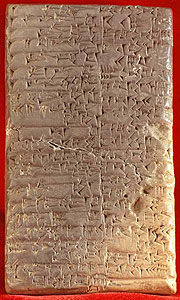Project Members
- Thomas Goldammer
Language Areality in Ancient Eurasia

The research provided a linguistic overview over the known languages spoken in that time, and the determination of areal patterns within this group of languages. This included testing of the present areal patterns, such as Balkan, Europe, South Asia, South East Asia, and other areals, but also typological enclaves in the Caucasus and Himalayas. Additionally, the project included a search for other areals that were not longer found in the present languages. The findings of the ancient patterns was then compared with the present-day patterns. The explanations for the changes in areal patterns that occurred within the past three millenia gave us an insight into the history of areality and certainly provided us with possibilities to go deeper into the history of human languages.
The methods used to test for areal patterns were statistical methods invented in the past 15 years for this purpose. Dealing with ancient languages was different from dealing with living languages, since nobody could provide us with more information than we could find from the ancient texts. For this reason the methods had to be adapted to be as much as possible able to compute the often poor data from the ancient languages.